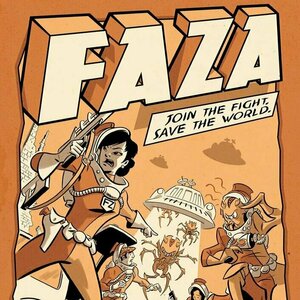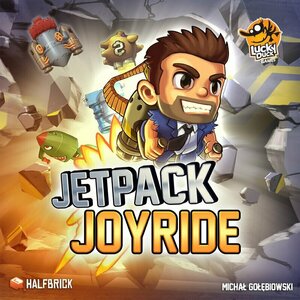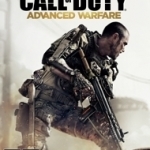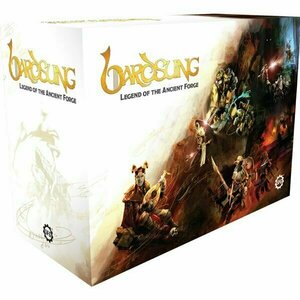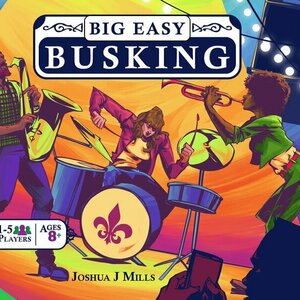Purple Phoenix Games (2266 KP) rated Faza in Tabletop Games
Oct 28, 2020
Faza is a sci-fi, grid movement, modular board, purely cooperative board game for one to four players. In this review I will be addressing it from a solo player’s viewpoint. In my plays I have used the full complement of four characters and controlled them all simultaneously.
In Faza, players take on the roles of four Faction Zeta members tasked with saving Earth from the Faza alien race. They will accomplish this by using each character’s skills effectively and efficiently, killing alien drones invading the town tiles, and attacking motherships using the help of turncoat rebel Faza. Only one path to victory lies ahead with several ways to lose. Do you got the GUTS? DO YA??
DISCLAIMER: We were provided a copy of this game for the purposes of this review. This is a retail copy of the game, so what you see in these photos is exactly what would be received in your box. I do not intend to cover every single rule included in the rulebook, but will describe the overall game flow and major rule set so that our readers may get a sense of how the game plays. For more in depth rules, you may purchase a copy online or from your FLGS. -T
To setup a game of Faza, each player will choose a character to control throughout the game. These characters are medical, political, tactical, or technological in nature, and there are two of each from which players may choose. The map of the town is comprised of 16 tiles, and once randomly setup in a 4×4 grid players will place their color-matched meeples on the appropriate Outpost tiles along with two rebels (purple fazeeples). Each of the three mothership standees will be placed on tiles corresponding to rulebook placement along with three drones and two drones per orthogonally adjacent tiles. The Faza deck is to be shuffled and placed aside, along with the remaining drones and rebels. Each player places out their character action cards in numerical order and the game may now begin in earnest!
On a player’s turn… well, there aren’t any turns in this game. In fact, the game is played over several phases: the Team Phase and the Faza Phase. During the Team Phase players may use several free actions and one action pertaining to each of their four player action cards. Each of these cards offer the player a choice of two actions. Perhaps one side is movement and the other a bazooka. Or one is an airplane while the other is a raygun, for example. As actions are spent cards are twisted 90 degrees to keep track.
During the Team Phase players may play their actions in any order that would benefit the team best. This also includes fighting drones and sending rebels to damage the motherships. However, with every damage to the mothership taken a Faza card is drawn and put into play. These could be real bad news for the heroes, or even reward cards. They can be devastating or not so bad at all. Once players have finished the Team Phase, the action now turns to the Faza.
During the Faza Phase the Mothership Activation Tracker will move to the next mothership in sequence and activate their abilities. The motherships will typically move, do something bad to the terrain or drop more drones or destroy something, and then pass play onto the players again.
Each mothership starts the game with 4 HP and once players send enough rebels and encounter the same number of Faza cards the mothership is downed and less powerful when their ability card is activated. However, players will win once all three motherships have been defeated! On the other hand, players will lose when any one player dies of injuries from unsuccessful battles, the players run out of drones to be placed on the board when needed, all of the Outpost tiles have been terraformed by the Faza motherships, or all rebels have been removed from the board in Hard Mode.
Components. When contacted about reviewing the game I first turned to the website and watched a how to play video by Jon Gets Games. He did a great job explaining the rules clearly and succinctly. Then I happened to get a notification on BGG that Marco Arnaudo posted a video on Faza, so I watched it as well. In his video he complains that though the components are all very nice (which they are for sure) the color palette is not great. I can certainly see why he would say such a thing, but orange is my favorite color, so to see so much of it on a game is a big plus for me. Yes, having the orange drones sitting atop an orange town tile can maybe make for unpleasant color contrast, I happen to find it tolerable and enjoyable. The quality of the components is wonderful and the box has a nice heft to it. No complaints from ME about the components. Did I mention the rebels are an amazing purple color as well? No secret here that we love the color purple! Maybe even more than Oprah!
The gameplay is where it’s at for me. Marco too. We both love this little gem! The ability to sandbox your entire turn and just have one character do one action, then switch over to another character to do one or more actions, then back to the original is just so much fun. Each character has a special ability and four action cards. Even when an injury must be sustained, actions are still available, but at a much lesser potency. That’s a great way to negatively affect the players without having to completely debilitate them. To sustain an injury the player will flip their lowest-numbered action card to the back side, and once all four of their action cards are injured they are dead. D-E-D dead.
As a solo game Faza really delivers the goods. Being able to control two to four characters by oneself and determine the best order to activate abilities and move meeples around is delicious. Having certain tiles offer combat bonuses to matching characters is excellent and a great way to thin the herd of pesky drones. I really cannot say enough great things about the game. If you have never heard of this one, please don’t worry. I really hadn’t either until the designer contacted me about reviewing it. And I am certainly glad he did because this is a marvel of a game. I am looking forward to my next play against the Faza and increasing the difficulty to really bash my confidence on this one.
If you are looking for a game that is relatively quick to play and offers so many great choices, while using a wonderful art style and color palette, I urge you to check out Faza by visiting the website and ordering your copy right away. The Earth needs you to ward off the invaders and you need to play this game of mostly orange with a dash of purple.
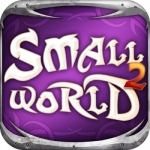
Small World 2
Entertainment and Games
App
This game is like risk, but Faster, Funnier, and more fun. "One of the most compelling games for...
BoardGames BoardGameApp GreatGames
Purple Phoenix Games (2266 KP) rated Jetpack Joyride in Tabletop Games
Jan 8, 2020 (Updated Jan 8, 2020)
Originally a mobile game, Jetpack Joyride follows our main character, Barry, as he attempts to escape a top-secret lab with a stolen jetpack! He must avoid being hit by zappers, annihilated by lasers, and blown away by missiles in the process. If Barry succeeds, he escapes with not only the high-tech jetpack, but also with as many gold coins and other top-secret gadgets as he can get his hands on! So the risk is definitely worth the reward. But if Barry is unable to escape, he will face the consequences for his unauthorized joyride… In all honesty, I had never heard of Jetpack Joyride before I Kickstarted the board game version, so I downloaded it on my phone to see how it plays. Do you remember Flappy Bird? The mobile version of Jetpack Joyride is kiiiinda like that, but more exciting and way less infuriating. It’s free to download in the App Store and Google Play Store, so check it out if you’re interested! Anyway, back to the board game version. The premise is the same as the app – you have to create a path for Barry to use for his escape from the lab, utilizing the gadgets available to you and collecting gold coins on your way.
DISCLAIMER: We are using the Kickstarter Deluxe version of the game. We do have the expansions from the KS campaign, but will not be using those for this review. Also, we do not intend to cover every single rule included in the rule book, but will describe the overall game flow and major rule set so that our readers may get a sense of how the game plays. For more in depth rules, you may purchase a copy from the publisher directly or from your FLGS. -T
Jetpack Joyride is a real-time game of tile placement in which players are racing to see who can complete their run (path through the lab) the fastest. The game lasts for 3 runs, and points are earned throughout all runs. To setup, each player receives a set of 4 lab sector cards and sets them on the table in front of them in numerical order, 1-4. Three mission cards (cards that score points at the end of the run) are revealed and available for all players. Players may also have gadgets, available only to them, to help score extra points. When a run begins, all players grab translucent polyominoes (like matte versions of bits from Blokus) from the common pool and place them on their lab cards to create an unbroken path through the lab. There are specific placement restrictions that I will leave for you to discover in the rulebook. The game has no set time limit for each run, but it is a race to complete a path before your opponents. At the end of the run, points are tallied for completed missions and gadget cards. Easy, right? Here’s a small twist – before starting the next run, all players pick up their lab cards and pass them to the player on their left. So each run, players are looking at new cards and must find new paths through the lab! New mission cards and gadgets are revealed before subsequent runs as well. The player with the most points at the end of all 3 runs is the winner!
Jetpack Joyride is a fast-paced, exciting, and surprisingly strategic game that keeps all players engaged and entertained. And that’s what I love about it. First of all, real-time games are always high-energy, at least in my opinion. It’s nearly impossible to stay calm and collected when you’re literally racing against your opponents! Jetpack Joyride is definitely not a passive game, and there’s so much action and excitement that you sometimes forget you’re literally just laying tiles on cards. The next thing I love about this game is how deceptively strategic it is. Laying tiles to form a legal path across cards is not complicated, but doing so while also trying to earn extra points by completing missions (like placing 3 tiles of the same shape in a row, for example) adds a strategic element that you don’t expect. You’re not only trying to finish your run the fastest, but you’ve also got to fulfill the requirements for multiple mission and gadget cards too. One misplaced tile could decimate a run for you, so you’ve always got to be thinking several tiles in advance.
Going along with that, another neat thing about Jetpack Joyride is that all players are drawing tiles from a common pool. There is a finite number of tiles, and a specific number of the different shapes, so if the shape of tile you need is gone from the pool, you’re outta luck! You have to think and move quickly, otherwise you might get knocked out of a run, and that costs you valuable end-game points. For such a simple game, Jetpack Joyride also has a lot of variability. All lab cards are double-sided, and can be mixed and matched in any combination, as long as they are in a numerical set of 1-4. There are so many possibilities, chances are you won’t ever play with the same card combo twice….and if you do, chances are you won’t remember it 😛 All of these aspects elevate this game from a simple party game to a strategically fun game that can be played with any player count.
Overall, I think Jetpack Joyride is great. After my first play, I rated it a 4+, but after a few more I’ve changed my rating to a 5. As you can see from our scores above, Travis and our guest judge Luke enjoyed it as well. It’s a nice, light game that can be used as a filler between heavier games, or as a main-event game all on its own. Definitely a game I will use with newer gamers, and the strategic side will keep me coming back for more. I think Jetpack Joyride will get a lot of playtime from me, and it was worth my investment on Kickstarter. Purple Phoenix Games gives it a jet-powered 15 / 18.
Matthew Krueger (10051 KP) rated the Xbox 360 version of Doom in Video Games
Mar 20, 2020
The gameplay:
Doom is a first-person shooter presented with early 3D graphics. The player controls an unnamed space marine—later termed the Doomguy—through a series of levels set in military bases on the moons of Mars and in Hell. To finish a level, the player must traverse through the area to reach a marked exit room. Levels are grouped together into named episodes, with the final level focusing on a boss fight with a particularly difficult enemy.
While traversing the levels, the player must fight a variety of enemies, including demons and possessed undead humans, while managing supplies of ammunition, health, and armor. Enemies often appear in large groups, and the game features five difficulty levels which increase the quantity and damage done by enemies, with enemies respawning upon death and moving faster than normal on the hardest difficulty setting.
Levels can also include pits of toxic waste, ceilings that lower and crush anything below them, and locked doors which require a keycard, skull-shaped key device, or a remote switch to be opened.
The plot:
Doom is divided into three episodes: "Knee-Deep in the Dead", "The Shores of Hell", and "Inferno". A fourth episode, "Thy Flesh Consumed", was added in an expanded version of the game, The Ultimate Doom. The game itself contains very few plot elements, with the minimal story instead given in the instruction manual and short text segues between episodes.
In the future, the player character (an unnamed space marine) has been punitively posted to Mars after assaulting a superior officer, who ordered his unit to fire on civilians. Players assume the role of a space marine, popularly known as "Doomguy", fighting his way through hordes of invading demons from Hell.
The Impact/Legacy:
Doom helped define the FPS genre and inspired numerous similar games, known as "Doom clones". It is one of the most significant games in video game history, and is frequently cited as one of the greatest games of all time. It pioneered online distribution and technologies including 3D graphics, networked multiplayer gaming, and support for customized modifications via packaged files (WADs). However, its graphic violence and hellish imagery also made it a subject of controversy.
Doom was influential and dozens of new first-person shooter titles appeared following Doom's release, and they were often referred to as "Doom clones" rather than "first-person shooters". The term "Doom clone" was used to describe the style of gameplay in Doom-style games. While the term was initially popular, it was, after 1996, gradually replaced by "first-person shooter", and the phrase "first-person shooter" had firmly superseded "Doom clone" around 1998. Some of these were certainly "clones", hastily assembled and quickly forgotten, while others explored new grounds of the genre and were highly acclaimed. Many of the games closely imitated features in Doom such as the selection of weapons and cheat codes.
Devoted players have spent years creating speedruns for Doom, competing for the quickest completion times and sharing knowledge about routes through the levels and how to exploit bugs in the Doom engine for shortcuts. Achievements include the completion of both Doom and Doom II on the "Ultra-Violence" difficulty setting in less than 30 minutes each. In addition, a few players have also managed to complete Doom II in a single run on the difficulty setting "Nightmare!", on which monsters are more aggressive, launch faster projectiles (or, in the case of the Pinky Demon, simply move faster), and respawn roughly 30 seconds after they have been killed (level designer John Romero characterized the idea of such a run as "[just having to be] impossible").
So overall Doom is a epic game, and started the first person shooter genre, started speedrunning and started the franchise as we know today. So thank you id software and John Ramero for this game.

Sentinels of the Multiverse
Games
App
=============================== “This is a must have addition to your digital board game...
Gareth von Kallenbach (980 KP) rated the PC version of Call of Duty: Advanced Warfare in Video Games
Jun 19, 2019
The game is set in the near future where Exo Skeletons, drones, and target seeking grenades have become commonplace on the battlefield.
Players are cast as a young Marine who after a successful but costly battle finds himself at a crossroads. He is given a new chance when the head of a large and powerful private defense contractor offers to make him part of the team.
At this point players will take on a deadly terror threat all over the globe and will have an arsenal of weapons at their disposal including hover bikes for a thrilling chase through Detroit.
Of course there is a darker side to the story and a bigger plot is discovered where the player must stand up for what he knows is right even if it means turning his back on others.
The graphics of the game are first rate and the facial animations have to be seen to be believed. I enjoyed the new weapons and storylines, but much of the gameplay while exciting does follow the series staples of run and gun, stealth missions, and vehicle chases.
The addition of the Exo Suit is a huge plus as it allows for jet powered jumps and moves as well as the ability to cling to metallic surfaces.
This feature enhances the storylines greatly as I enjoyed jumping to and from moving vehicles, climbing up vast buildings, and making tall jumps in combat.
What really makes this game shine is the amazing multiplay which not only combines multiple modes such as Kill Confirmed, Deathmatch, Team Deathmatch, and countless other modes, it also has co-op missions as well.
The ease of customization in the multiplay modes is great as everything from energy weapons to machine guns is available to players as is the ability to customize your perks, kill streak rewards, and accessories.
The game offers bonus items that can be accessed in menu and in game which really enhances the appeal of the game. I remember turning a solar lense on some enemies and frying them down as well as getting a giant combat suit and cutting players down to size.
I had issues with the multiplayer in Ghosts and had to force myself to play to make max level, but thankfully Advanced has not had those issues as I happily play the online modes as often as I can. I have enjoyed the maps and the variety of weapons and combat styles immensely.
The inclusion of Kevin Spacey was a nice addition as far as I was concerned as it brought a new level of menace and complexity to what could have otherwise been a stock video bad guy. You can almost understand his motivations.
I was able to complete the single player campaign in a bit over 6 hours but I enjoyed the thrill ride it contained and being able to use the abilities of the suit as well as the grapple were well featured throughout the highly detailed levels of the game.
In the end if you like Call of Duty then you will likely love this game and if you are not a fan, then no matter what the publisher and designers do will likely not appease you. For me, this was a nice mix of the old and familiar with some new directions that shows there is still plenty of life in the franchise.
http://sknr.net/2015/01/08/call-dutyadvanced-warfare/

Fireman Sam - Fire & Rescue
Games and Entertainment
App
OFFICIAL LICENSED FIREMAN SAM APP New FREE Ocean Rescue Themed Update: Includes an 25 Extra...
Purple Phoenix Games (2266 KP) rated Big Easy Busking in Tabletop Games
Sep 15, 2020
Big Easy Busking is a card-based area control game with a sweet sweet music theme. Players will be taking turns learning charts, playing charts, and transferring energy from the musicians to the crowd and back. The winner of Big Easy Busking is the player who can score the biggest haul in tips for the weekend to become the hottest band in town.
DISCLAIMER: We were provided a copy of this game for the purposes of this review. This is a retail copy of the game, so what you see in these photos is exactly what would be received in your box. I do not intend to cover every single rule included in the rulebook, but will describe the overall game flow and major rule set so that our readers may get a sense of how the game plays. For more in depth rules, you may purchase a copy online or from your FLGS. -T
To setup, two “streets” in New Orleans will need to be populated with song cards, both standards and learnable tunes. Crowd cards will be placed under the streets to depict certain crowds and what the moods of those crowds are. Each player will receive some starting bread (money for those not in the biz), energy for their 3-piece band of sax, trumpet, and drums, a starting set list of three tunes, and a reference card that has nothing to do with the metaphor. Decide who can play the highest note (if you are all trumpet players) and the gig may begin!
A turn is broken down into a few different parts. The first thing to be done on a turn is to finish playing the song that had been started in the previous round. Obviously you need to START playing a song to be able to finish, so the primary phase of the turn would be to either learn a song from the song offer or start playing a song from those dealt during setup. To play a song, players will choose a song card, place it under a crowd card (hopefully matching their mood: masks, hearts, beads, fleur-de-lis), gather the required energy from the musicians appropriately, and add those energy cubes to the song card.
After a song is started or learned, the player’s turn is over. On the next turn the player will finish playing the song by moving the spent energy to the crowd in full and taking $1 or moving some of the energy to the crowd and some back to their band members to be used on future songs.
The middle step in a turn (yes, I know I am explaining it out of order, but you do have to start playing a song before you can finish it) is to optionally tip your band members by trading in money for energy at a 1:1 ratio.
Once all players have used up their energy cubes or simply wish to, they will announce that they are “taking a break.” In other words, they pass for the remainder of the round. As the last player takes their break the end of round activities begin. Printed on each crowd card are two important icons: payout amounts for majority of energy and payout amounts for energy reaching the threshold. Resolving each crowd card will determine the players that hold majority or shared majority in each crowd location. For the majority holders payouts will reflect what is printed on the upper left of the crowd card. The upper right of the crowd card displays the number of energy needed upon it to meet the threshold in order to be paid the amount shown. When all crowd cards have been scored players will setup for the next night (round) per the rules. Play continues in this way over three rounds with the winner being the player at the end of the game with the most money.
Components. This is a smaller box (not exactly the same size, but think Tiny Epic), but it is packed with some really amazing bits. First off, as you can tell from the photos the art and color palette used here is simply phenomenal. I absolutely love the color scheme and the art certainly reminds me of some paintings we purchased from an artist on Jackson Square last time we were able to visit. The cards are nice, but I think I will want to sleeve them eventually as I had them in my hands the whole game. The cardboard money and mood tokens are fine, and the wooden cubes reflect the colorful nature of this little gem. All in all, exactly what I would expect from components in a Weird Giraffe Games production. Stellar (see what I did there, Carla?).
I have not really enjoyed a ton of area control games in my gaming history. So this came as a little bit of a shock as I truly loved playing this game. Even the solo rules are engaging and DIFFICULT to win. I came close though – within $1. The game is super quick as you are trying to please the crowds and their distinct moods with your best charts, but having to be mindful of not overextending your musicians lest they be too exhausted to give you the gas when you need it. THAT part resonates with me personally. Being a musician myself, I can tell you that crowds that are into a tune or a band and give them all the energy they have will be rewarded with even more from the band. I definitely give it more when the crowd digs what we’re laying down.
In any case, this is a game review, not a nostalgic trip down my musical memory lane. But then again, a little card game just brought me back wonderful memories of my band, and of visiting New Orleans, and of the joy of live music. Does Big Easy Busking completely mimic what it’s like to be a musician? Well, no, I can’t imagine how any game truly could, but it certainly shows the cyclical nature of energy being exchanged between musicians and appreciative crowds. Oh, the names of the tunes are also pretty funny on some. This all said, I super love this game and will be kicking out something in my collection to make room for it. If you are needing a smaller card game that you can bring out with musicians or non-musicians that appreciate the theme but also want to start introducing area control in a more accessible form, please do check out Big Easy Busking. Purple Phoenix Games gives it a good-for-the-soul 10 / 12. Maybe once I get into video I will do a Dan King (Game Boy Geek) serenade for Big Easy Busking as it travels into my collection.

Evolve Basketball
Sports and Social Networking
App
Evolve Basketball App is an all in one basketball training app. It is a complete tool that allows a...
